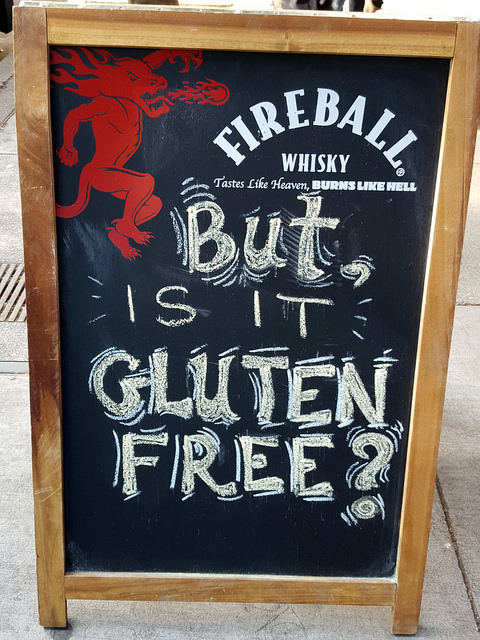
We’ve all done it, haven’t we?
We’ve all stood in the middle of the grocery aisle studying two versions of the same food for just a little too long. Eventually, we grabbed the one with the healthier looking label, right?
Well somehow, the label on the product we take home has tricked us into thinking the choice in our hand is healthier than the choice we left on the shelf. But, the sad truth is in most cases…we were fooled.
That’s because when we read words like “natural” or “heart healthy” on grocery labels, they’re slapped on by the marketing folks at big food companies to make food look healthier than it is.
So, it’s up to us to be on the lookout. We’ve got to educate ourselves about what’s truly healthy instead of what’s just a healthy-looking food mirage.
And, there’s a whole section on this in my book, The Plant Paradox, about the ways food is labelled to make it sound healthy—even if it’s terrible for us.
But today, I want to share some intel about the most common “healthy” labels on packaged food:
Labels that are meant to mislead us:
This one’s a biggie. But, let me be clear—there are some people who need to look for the “gluten-free” label for personal health reasons.
That doesn’t mean “gluten-free” means healthy. In a lot of instances, “gluten-free” foods actually have more lectins—toxic plant proteins—than foods with gluten, because they’re made with rice, corn, and lots of sugar.
So when we shop, we can’t automatically assume that “gluten-free” is good for us, or that it means lectin-free. Instead, read those ingredient labels carefully.
Free Range
Now, we’ve all seen the “free range” label on eggs, poultry, even meat.
But here’s the low-down about “free range”: basically, it means nothing. It’s got zero to do with how animals live, or what they eat.
In fact, it’s completely legal to cram animals full of corn, soy, and wheat, and to keep them in overcrowded, dangerously cramped quarters and still call them “free range,” as long as they have access to a small patch of grass for at least five minutes a day.
So instead of “free range,” look for pasture-raised or wild meat and seafood—those animals were raised the way nature intended, and had the opportunity to eat the way nature intended.
That means they had a better quality of life and are better for our health.
Organic
I like organic food—in fact, I love organic food. But that doesn’t mean all organic food is good for us.
Organic cows and chickens can be fed organic corn and wheat which are designed to fatten them up. Trouble is, eating these meats will fatten us up as well.
Complete junk food can be organic too. Just take a look at the organic section at the local store. They’ve got organic cookies, organic ice cream, even organic potato chips.
It may have a fancy label, and cost twice as much, but junk food is still junk—organic or not.
Heart healthy
As a cardiac surgeon, this is my biggest pet peeve. Turns out, the FDA certifies foods it wants us to eat—and eat a lot of— as heart healthy.
Let me put it this way: Froot Loops—the super-sweet, sugary cereal—is certified heart healthy. Avocado, salmon, and nuts are not. I mean, what the…?
The heart healthy label has very little to do with what’s actually healthy. But it’s got a lot to do with what the food industry wants us to spend our money on—things like sugar, wheat, and corn.
So don’t look for the “heart healthy” label when shopping. Instead, look for real foods that are proven to boost heart health—foods rich in Omega 3 and polyphenols, for instance.
“Natural”
As far as the USDA and the FDA are concerned, “natural” means nothing. They haven’t defined it, and since it’s not regulated, anyone can use it on their packaging.
Even though “natural” sounds healthy—it doesn’t need to be. Sugar can be natural. So can wheat. So can arsenic, for that matter.
Now, that doesn’t mean we shouldn’t buy foods with the “natural” label. But we should read the packaging first, to make sure we’re buying food that’s not loaded with sugars, lectins, or unhealthy fats.
Labels are meant to mislead us and make us think the foods we’re putting in our shopping carts are healthy. That way, we buy more.
So it’s up to us to stay strong and refuse to let flashy marketing campaigns suck us in. Instead, we have to read ingredient lists thoroughly and do the right research—it’s the best way we have to protect our health. Remember, our health is our responsibility.
For more about lectin-free eating, check out my YouTube channel. Let me know your thoughts below about labels that have misled you, and what you look for now.
~
~
Author: Dr. Steven Gundry
Image: Quinn Dombrowski/Flickr
Editor: Lieselle Davidson
Copy Editor: Callie Rushton
Social Editor: Sara Karpanen







Read 1 comment and reply